Today’s column will wrap up a nationwide electoral analysis beginning with a 26-part series, covering every district in the first half of the year and followed by a summary of PASO primary voting in August. Now that this eternal election is all done and dusted – bar Salta next weekend (with even a mayoral run-off in this city averted) – we can close the book. True to its federal spirit this column will avoid the big picture to focus on how “the other half” voted – the regional variations in the general voting along with the senatorial and local elections in eight and four districts respectively (with both levels of voting in this city).
Describing the regional variations within last August’s PASO primary landslide for president-elect Alberto Fernández was relatively simple with President Mauricio Macri only winning in the Federal Capital and Córdo- ba. Macri then fell short of 30 percent in all the five Patag o n i a n pro - vinces and 10 nor - thern provinces, except La Rioja, while topping that percentage throughout the central belt except San Juan – the rampantly victorious Fernández commanded an absolute majority in most provinces (14) while clearing 30 percent everywhere else (even if only just in Córdoba).
Last Sunday saw a much closer and more complex result with Greater Buenos Aires playing a far more decisive role than in August by supplying almost 80 percent of the winning margin of two million votes, when it merely formed part of an almost nationwide backlash in August.
Rather than only one province beyond the capital, Macri won five – three with Peronist governors and/or governors-elect (Santa Fe, Entre Ríos and, most surprisingly San Luis) – while laying claim to absolute majorities in two (Córdoba and Mendoza) even if Fernández repeated his 14 absolute majorities from August. Beyond Patagonia (excluding the Vaca Muerta province of Neuquén), Formosa and Santiago del Estero, Macri did not fall below a third of the vote anywhere, a floor only eluding Fernández in Córdoba. Last Sunday the country resembled a Boca Juniors football shirt more clearly than ever, with a yellow band across the middle.
This electoral geography only gave Macri chances in the Federal Capital and Entre Ríos, since three of the other six provinces electing three senators were Patagonian (Neuquén, Río Negro and Tierra del Fuego) while the other three were northern (Chaco, Salta and Santiago del Estero). Curiously enough, the two senatorial heroes for Macri’s Juntos por el Cambio coalition were on opposite sides of the epic 2008 clash over grain export duties – Martín Lousteau (then the first economy minister of the Cristina Fernández de Kirchner administration) and Entre Ríos farming leader and incumbent Senator Alfredo De Angeli, who clinched the third Senate seat by just 3,000 votes. Estela Olalla and Guadalupe Taglafierri will now be respectively accompanying De Angeli and Lousteau into the Senate while the third seats went to the Frente de Todos runners-up, 2015 Peronist City mayoral candidate Mariano Recalde and Edgardo Kueider in Entre Ríos (much closer to the moderate Peronist Governor Gustavo Bordet than to Kirchnerism).
Otherwise no less than 13 of the future 18 senators are aligned with president-elect Alberto Fernández. Moving down the country, Salta senators-elect Sergio Leavy and Nora Giménez are strongly Kirchnerite with the minority member for Juntos por el Cambio more typical of the local conservative Peronism – three-term governor (1995-2007) and now three-term senator Juan Carlos Romero. Santiago del Estero presented the paradox of only one senator elected for Frente de Todos (incumbent Gerardo Montenegro) but a clean sweep for Fernández – this is because three-term Governor Gerardo Zamora, a “K Radical” in his first two terms (2005-13) thanks to then-Cabinet chief Fernández, reverted to form, imposing his wife and ex-governor Claudia Ledesma along with José Neder as the two senators for his Civic Front majority. In Chaco governor-elect Jorge Capitanich (twice Cabinet chief nationally) ensured victory for Frente de Todos by heading the senatorial ticket himself but he will obviously be staying in Resistencia to run the province with current Senator María Pilatti and Antonio Rodas going to the Upper House – Víctor Zimmerman, who worked on the Belgrano Plan to develop northern infrastructure, will represent Juntos por el Cambio.
In Patagonia, where Alberto Fernández averaged almost 55 percent as against under 30 percent for Macri, all six majority senators accrued to Frente de Todos – Martín Doñate and incumbent Silvina García Larraburu in Río Negro, Oscar Parrilli and Silvia Sapag in Neuquén, and Matías Rodríguez and María Duré in Tierra del Fuego. Former AFI intelligence chief (although the opposite of intelligent, according to his ex-boss Cristina Fernández de Kirchner) Parrilli is a potential caucus whip; García Larraburu was the only Victory Front (FpV) senator to vote against last year’s abortion bill and Sapag comes from the founding family of the MPN Neuquén Popular Movement (which has won every provincial election since 1962 but will strangely be absent from the Senate for the first time ever, although the future Juntos por el Cambio minority senator Lucila Crexell currently sits for the MPN). Of the three minority senators only Tierra del Fuego Radical Pablo Blanco belongs to the Cambiemos coalition since the other is outgoing Río Negro Governor Alberto Weretilneck, runner-up even though his Juntos Somos Río Negro party won last April’s provincial elections. But all three lean towards Macri.
All but six of the 24 senators-elect are newcomers with Macri’s running-mate Miguel Angel Pichetto (Majority Leader for 17 years), Senate head Federico Pinedo and two-term Chaco Radical ex-governor Angel Rozas among the departures.
The four districts voting at executive level differ hugely in population – Buenos Aires City and Province are almost half the electorate (just under 45 percent) while neither Catamarca nor La Rioja reach one percent – but all four winners had huge margins. Catamarca Peronist Raúl Jalil led the way with some 35 percent more of the vote over Radical Roberto Gómez, City Mayor Horacio Rodríguez Larreta beat Matías Lammens by over 20 points (55.8 to 35.1 percent), La Rioja’s Ricardo Quintela topped Radical Senator and former Defence minister Julio Martínez by 16 points despite the attempt of two-term ex-governor Luis Beder Herrera to play spoiler, while the smallest but most important margin of the four went to Axel Kicillof – ousting the popular Buenos Aires Province Governor María Eugenia Vidal by 52.2 to 38.5 percent.
A decisive majority of over 1.5 million votes from Greater Buenos
Aires but the other 23 provinces account for 55 percent of the
electorate – GBA and economic downturn might have been offset
by negative memories of Cristina Fernández de Kirchner’s centralist presidency, but the real game-changer was the Alberto Fernández candidacy itself.related news









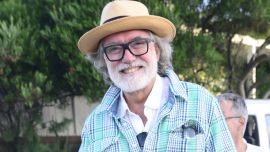





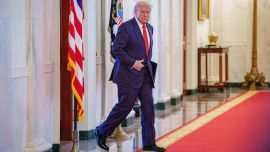

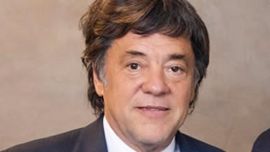

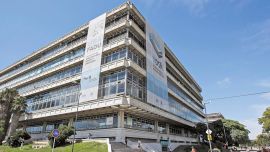
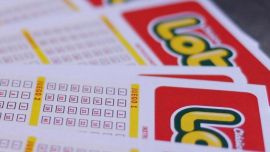
Comments